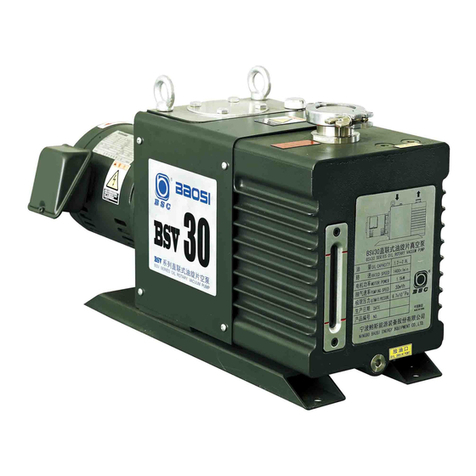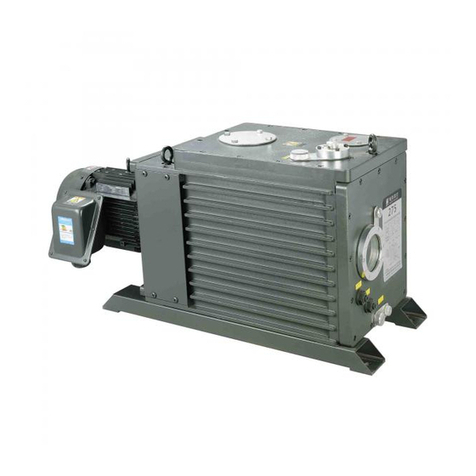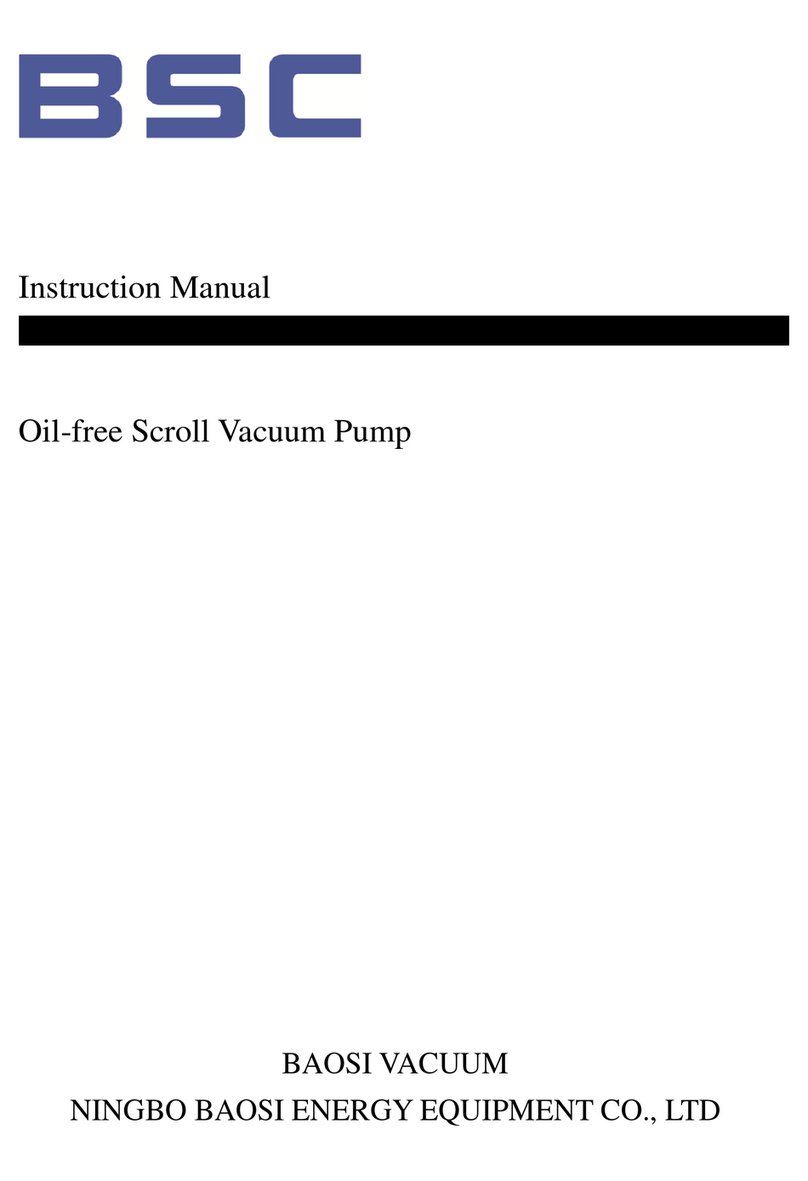
6.3 Outlet side
The pump have integrated exhaust filters which, even at a high gas throughput, trap
the oil mist and guarantee exhaust gas free of oil mist. If the exhaust filters are clogged,
pressure relief valve opens and the filters are bypassed. As a result, the proportion of oil in
the exhaust gas as well as the pump’s oil consumption rises. Installing new exhaust filters
will correct this problem.
This situation must be resolved by changing the exhaust filters. It is under utilizer’s
responsibility to assure maintenance on materiel to avoid any oil mist of the limits
authorized by regulations.
Check in the individual case whether an exhaust line is necessary and/or prescribed.
Volatile substances can pass through the filter. Depending on the processed gas, we
recommend connecting an exhaust line; this is always necessary when the exhaust gases are
dangerous.
Observe the safety precautions that apply to your application and process gases. The
pump’s exhaust port also has an internal thread. A hose can be connected via a suitable
screw-in nipple
The cross-section of the exhaust line should be at least the same as the pump’s exhaust
port. If the exhaust line is too narrow, overpressure may occur in the pump.
Install the exhaust line with a downward slope to prevent condensate from flowing
back into the pump. If this is not possible, we strongly recommend to install a condensate
trap . if several pumps are connected to one exhaust line, ensure an adequate cross-section
and a non-return valve at the exhaust of each pump.
Never operate the pump with a blocked or restricted exhaust line. Before start-up
ensure, that any blinds or similar shut-off devices in the exhaust line on the pressure side
are opened and that the exhaust line is not obstructed. Such restrictions reduce the
pumping speed, increase the temperature, and could overload the motor or cause a
dangerous overpressure in the pump. Excessive pressure in the pump could damage the
seals, blow out the sight glass, or destroy the pump housing. In addition to this explosion
hazard, excessive backpressure can result in hazardous process gases leaking out of the
pump. If you are purging the oil casing with inert gas, limit the inert-gas flow.
When pumping dangerous gases, exhaust line must be tight
The maximum exhaust pressure must not exceed 1.15 bar (absolute). Also reliably
prevent the occurrence of any blockage in the exhaust line. Exhaust filter, accessories and
the tubing must be rated according to the maximum throughput. The maximum
throughput is equivalent to the pumping speed of the pumps.
9

































